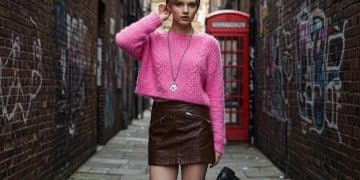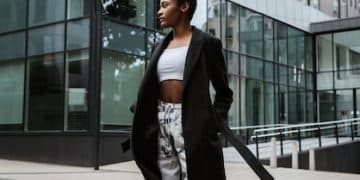Create a Signature Style: Develop Your Personal Look
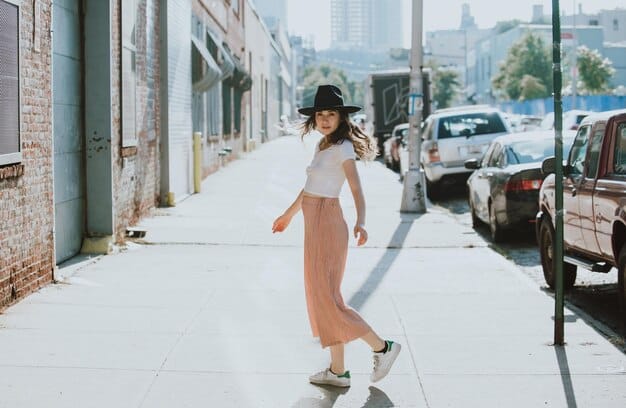
Creating a signature style involves identifying your personal preferences, experimenting with different fashion elements, and curating a wardrobe that reflects your unique personality, making you feel confident and authentic.
Do you ever admire someone’s style and wish you could capture that same effortless chic? The key isn’t imitation, but rather discovering and developing your own unique signature style. **How to create a signature style: Developing a personal look that reflects your personality** is a journey of self-discovery, allowing your clothes to tell your story.
Understanding Your Personal Style
Understanding your personal style is the foundation for creating a signature look. It’s about identifying what resonates with you, what makes you feel comfortable and confident, and what aligns with your lifestyle and values. This initial exploration is crucial for developing a style that is authentic and sustainable.
Self-Reflection and Inspiration
Begin by reflecting on what truly appeals to you. Consider the clothes you instinctively gravitate towards, the colors that make you feel good, and the silhouettes that flatter your body. Also, look for inspiration from various sources.
Analyzing Your Current Wardrobe
Take a close look at your current wardrobe. What pieces do you wear most often? What items do you always feel good in? Identify the common threads among these favorites to better understand your preferences.
- Identify your favorite pieces and analyze what makes them appealing.
- Consider the colors, fabrics, and shapes that dominate your wardrobe.
- Note any items you consistently avoid and determine why.
- Reflect on the overall aesthetic that emerges from your existing clothes.
By understanding your personal style, you create a strong sense of self that enables you to curate a wardrobe that represents your personality.
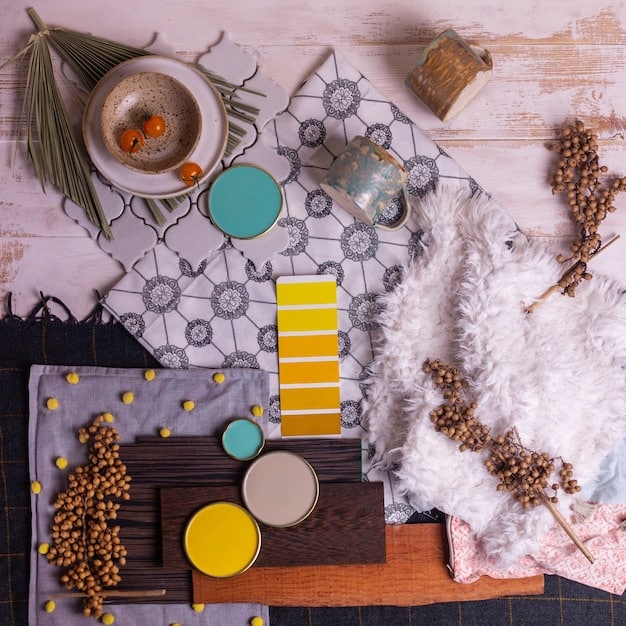
Exploring Different Fashion Styles
Exploring different fashion styles is an essential step in creating your signature look. It allows you to broaden your horizons, experiment with new ideas, and refine your preferences. This phase is about trying things out, seeing what clicks, and understanding the nuances of various styles.
Classic vs. Trendy
One of the first distinctions to explore is the difference between classic and trendy styles. Classic styles are timeless and characterized by clean lines, neutral colors, and enduring silhouettes. Trendy styles, on the other hand, are influenced by current fashion movements and are often more experimental and daring.
Bohemian vs. Minimalist
Another interesting comparison is between bohemian and minimalist styles. Bohemian style features flowy fabrics, vibrant colors, and eclectic accessories, often drawing inspiration from vintage and global influences. Minimalist style focuses on simplicity, clean lines, and a neutral color palette, emphasizing quality over quantity.
- Experiment with various styles to identify elements that resonate with you.
- Consider mixing and matching different style components.
- Remember that a signature style is about personal expression, not strict adherence to any single trend.
- Use style quizzes from leading fashion sources to understand your unique style.
Ultimately, this exploration will help you refine your taste and curate a style that is reflective of your individuality.
Defining Your Signature Colors and Patterns
Defining your signature colors and patterns is a crucial part of developing a personal style. Colors and patterns have the power to evoke emotions, express personality, and enhance your overall appearance. Understanding which colors and patterns complement you best is essential for creating a cohesive and impactful look.
Understanding Color Theory
Start by learning the basics of color theory. Understanding concepts like warm and cool tones, complementary colors, and analogous colors can help you make informed decisions about which colors to incorporate into your wardrobe. Experiment with different color combinations to see what works best for you.
Identifying Your Personal Color Palette
Determine your personal color palette based on your skin tone, hair color, and eye color. Some people look best in warm tones like reds, oranges, and yellows, while others are more flattered by cool tones like blues, greens, and purples. Understanding your undertones will guide you in selecting colors that brighten your complexion and enhance your features.
- Experiment with bold colors and subtle neutrals to see what works best for you.
- Choose colors that reflect your personality and make you feel comfortable.
- Consider how colors can be used to create different moods and effects.
Mastering the art of color and pattern selection allows you to express your character and enhance your look, making your style a true reflection of yourself.
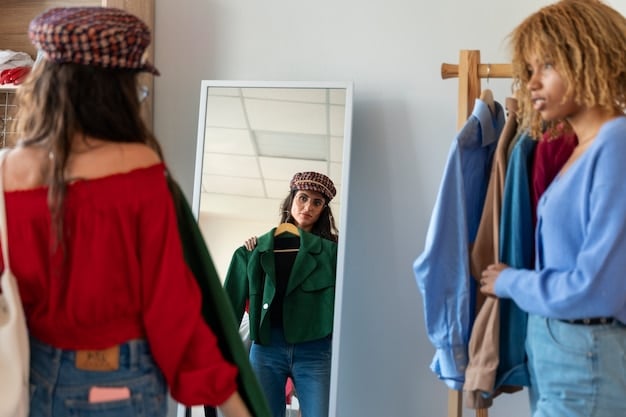
Accessorizing to Enhance Your Personal Style
Accessorizing is key to enhancing your style and making it uniquely yours. Accessories are the finishing touches that can transform an outfit from ordinary to extraordinary. They allow you to express your personality, add pops of color, and elevate your overall look. Learning how to choose and style accessories is essential for creating a signature style.
Jewelry, Scarves, and Hats
Jewelry, scarves, and hats are some of the most versatile accessories you can use to enhance your style. Jewelry can range from delicate necklaces to bold statement pieces, each conveying a different message. Scarves can add a touch of color and texture to any outfit, while hats can provide both style and function.
Belts and Shoes
Belts and shoes are not only practical but also stylish accessories that can define your silhouette and complete your look. A well-chosen belt can cinch your waist and create a more flattering shape, while the right pair of shoes can elevate your style and provide comfort.
- Invest in a few high-quality accessories that you love and can wear with multiple outfits.
- Don’t be afraid to experiment with different accessory combinations to find what works best for you.
- Consider the overall aesthetic you want to achieve and choose accessories that complement it.
- Pay attention to proportion and balance when accessorizing to ensure your look is cohesive.
Mastering the art of accessory selection is a powerful tool to transform and elevate your personal style, turning every outfit into a statement of your individuality.
Building a Wardrobe That Lasts
Building a wardrobe that lasts is about more than just buying clothes; it’s about investing in quality pieces that stand the test of time and reflect your personal style evolution. A well-curated wardrobe should be versatile, functional, and sustainable, providing you with a variety of options for different occasions.
Investing in Quality Basics
Start by investing in quality basics that form the foundation of your wardrobe. These include items like a well-fitting pair of jeans, a classic white shirt, a tailored blazer, and a comfortable pair of shoes. Choose timeless pieces that can be mixed and matched with other items in your closet.
Adding Statement Pieces
Once you have a solid foundation of basics, add statement pieces that reflect your personality and unique style. These can be items like a bold-colored coat, a patterned dress, or a statement accessory. Choose pieces that make you feel confident and express your individuality.
- Choose fabrics that are durable and easy to care for.
- Consider how each item can be styled in multiple ways to maximize its versatility.
- Resist the urge to buy trendy items that will quickly go out of style.
- Regularly assess your wardrobe and remove any items that no longer fit or reflect your style.
Developing a mindful approach to building your closet will save money and ensure your wardrobe truly represents your evolving taste and personal expression.
Maintaining and Evolving Your Style
Maintaining and evolving your style is an ongoing process that requires attention, experimentation, and a willingness to adapt. Style is not static; it evolves over time as you grow, change, and discover new influences. Embracing this evolution is key to keeping your signature style fresh and relevant.
Staying Updated on Trends
Stay updated on current fashion trends without blindly following them. Use trends as a source of inspiration, but always filter them through the lens of your personal style. Incorporate elements that resonate with you and complement your existing wardrobe.
Experimenting with New Looks
Don’t be afraid to experiment with new looks and step outside of your comfort zone. Try different silhouettes, colors, and accessories to see what you discover. The more you experiment, the more refined and authentic your style will become.
- Allow your style to evolve naturally over time as your tastes and preferences change.
- Use seasonal changes as an opportunity to refresh your wardrobe and experiment with new looks.
- Remember that style is a form of self-expression, so have fun and enjoy the process.
By staying curious and adaptable, you’ll ensure your style remains a true representation of who you are, always fresh and expressive.
| Key Point | Brief Description |
|---|---|
| 🤔 Self-Reflection | Understand your preferences and seek inspiration. |
| 🎨 Color Palette | Define signature colors that complement you. |
| 💎 Accessorizing | Use accessories to enhance your personal style. |
| 👚 Wardrobe Building | Invest in quality basics and statement pieces. |
FAQ
▼
Start by looking at your existing wardrobe. What do you wear most often and feel confident wearing? This can help you understand your current preferences and build from there.
▼
It’s natural for your style to evolve. Embrace the change by experimenting with new trends and adjusting your wardrobe to reflect your current tastes and lifestyle.
▼
Pick trends that align with your personal aesthetic. Don’t feel pressured to follow every trend; instead, choose pieces that complement your signature look.
▼
Essential pieces include a well-fitting pair of jeans, a classic white shirt, a tailored blazer, and a comfortable pair of neutral shoes. These can be mixed and matched easily.
▼
Comfort is crucial. Your style should not only look good but also make you feel good. Choose clothing that fits well and allows you to move freely and confidently.
Conclusion
Creating a signature style is a rewarding journey of self-discovery and personal expression. By understanding your preferences, experimenting with different styles, and curating a wardrobe that reflects your personality, you can create a look that is both authentic and timeless.

